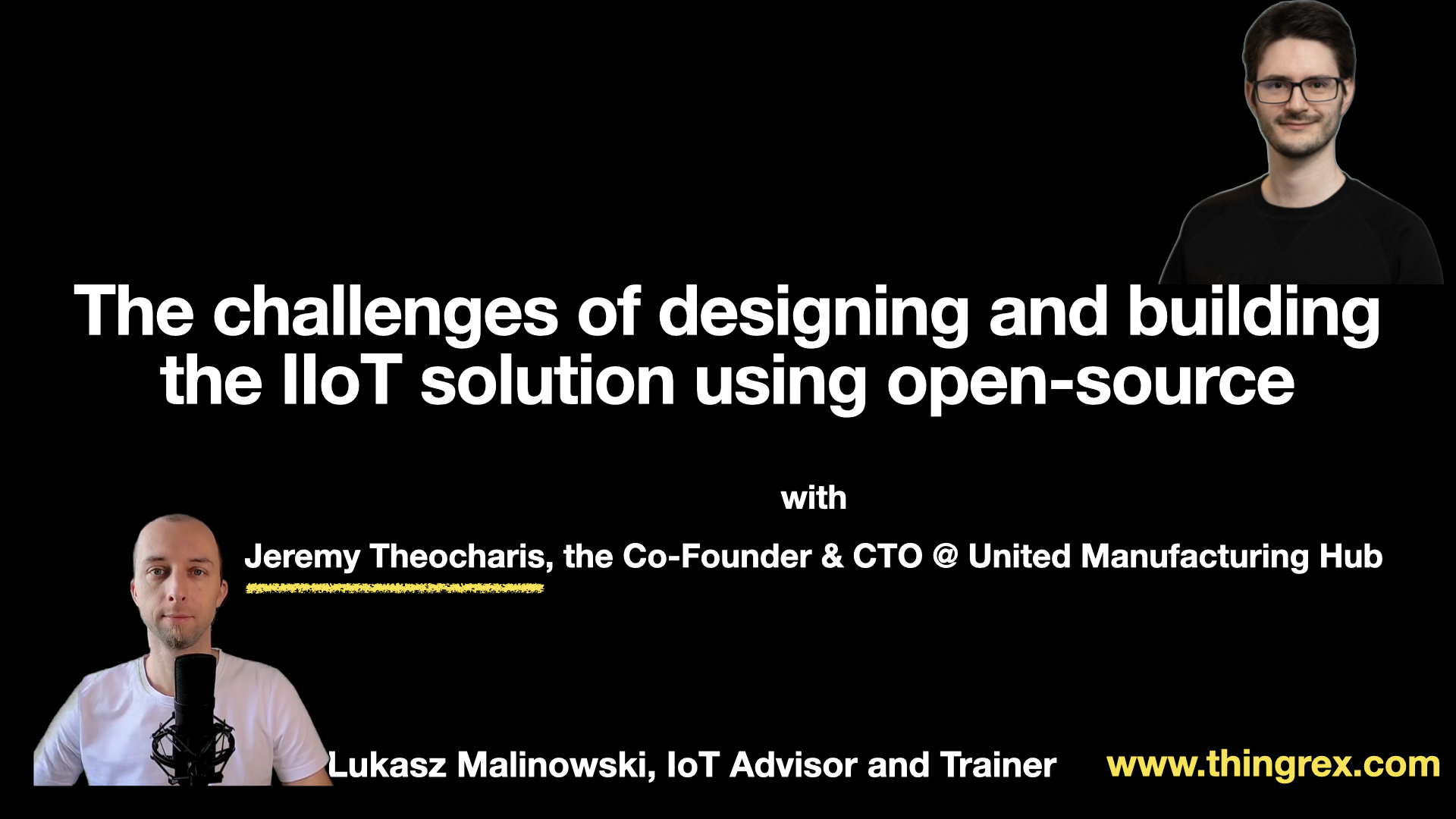
Embracing Open Source for Industrial IoT Transformation
Welcome to the Internet of Things Equation podcast. I’m thrilled to share insights from my latest episode, in which we dive deep into the transformative power of open-source technology in the industrial Internet of Things (IIoT). My guest, Jeremy Theocharis, co-founder and CTO of the United Manufacturing Hub, shared invaluable insights into his journey and the innovative approach to IIoT.
The Challenge with Traditional Manufacturing Solutions
Traditional manufacturing solutions often come with significant challenges. High costs, vendor lock-in, and the need for more flexibility stymie innovation and efficiency on the shop floor. Jeremy highlighted these issues, pointing out that relatively simple tasks can be prohibitively expensive and inefficient with existing tools.
Jeremy explained, “We were frustrated with the status quo of the market. The tools were costly and ineffective, so we decided to start with the MING stack and proceed from there to build the UMH.” This frustration led them to create a solution that leverages open-source technologies, offering flexibility and a cost-effective approach.
The Power of Open Source
Open-source technology offers a compelling alternative to traditional, closed systems. Jeremy emphasized that modern software development inherently relies on open source and that the question isn’t whether to use open source but how to harness its potential effectively.
He detailed how their team selected robust open-source components supported by substantial communities or companies, ensuring reliability and sustainability. This approach mitigates the perceived risks of open source, such as lack of support or security concerns.
Building a Future-Proof Architecture
One of the key principles of the United Manufacturing Hub is using open protocols at the core of its infrastructure. By leveraging standards like MQTT, they ensure flexibility and avoid vendor lock-in, allowing for easier integration and scalability. The use of Kubernetes and Helm provides a robust abstraction layer, enabling seamless deployment across various environments, from edge installations to the cloud.
Introducing Data Contracts
One of the most exciting developments Jeremy shared is the introduction of data contracts. This upcoming feature will help formalize interactions within a Unified Namespace, bringing order and structure to complex data architectures. It promises to enhance the manageability and scalability of IIoT deployments, making it easier for organizations to harness the full potential of their data.
Tips for Getting Started
For manufacturers looking to embark on their IIoT journey, Jeremy advises starting with a clear, well-defined goal and adopting a Proof-of-Value approach. “Start with one use case, show its benefits, and then build on that foundation,” he suggested. He also stressed the importance of using open standards to avoid future pitfalls and ensure scalability.
The Role of Digital Product Shadows
The concept of a digital product shadow is another critical component of their strategy. This approach allows manufacturers to trace every aspect of a product’s lifecycle, from raw materials to the final product, providing invaluable insights that can help optimize production processes and improve quality.
Overcoming Legal and Security Concerns
Addressing common concerns about open source, Jeremy explained that while legal and security issues are often raised, they are manageable with the right approach. Companies can mitigate these risks effectively by choosing projects backed by strong communities or commercial entities and implementing robust internal processes.
Conclusion
The insights shared by Jeremy Theocharis underscore the transformative potential of open-source technology in the industrial sector. By embracing open standards, leveraging robust open-source tools, and adopting a strategic, step-by-step approach, manufacturers can unlock new levels of efficiency, flexibility, and innovation.
Visit thingrex.com for more materials about the Internet of Things domain. Thank you for joining us on this journey towards a more innovative and efficient industrial future.
Stay tuned for more episodes where we explore the cutting-edge of IoT technology and its real-world applications. I’m your host, Lukasz Malinowski, the Internet of Things advisor and trainer. Thank you for listening!
Video

